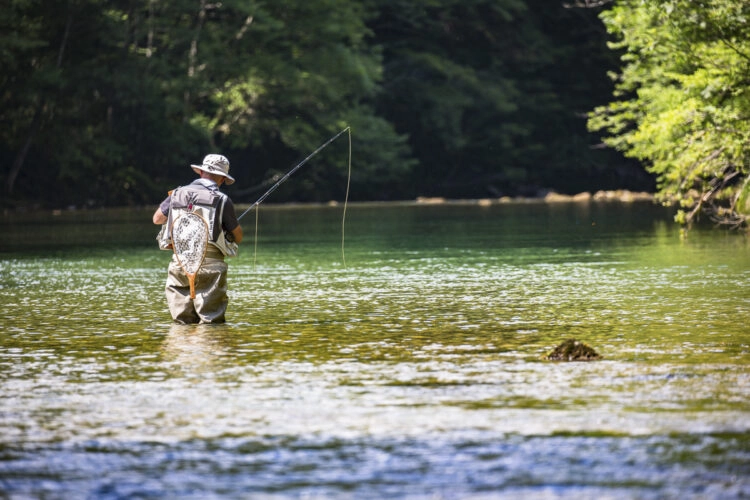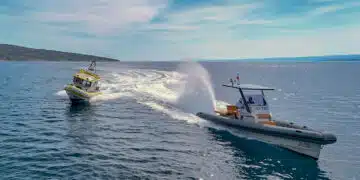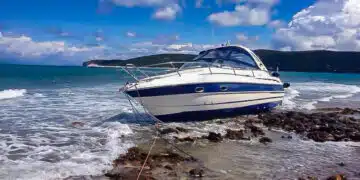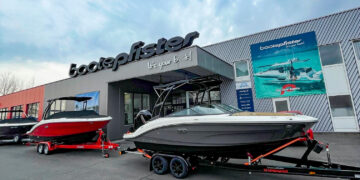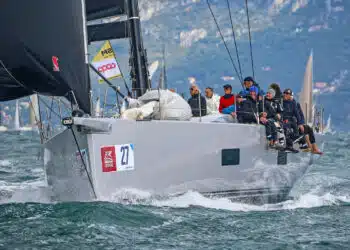Anyone traveling in Croatia with their own or a chartered yacht should plan time for a visit to one of Croatia’s eight national parks. Almost without exception, they are easy to reach from the coast and offer wild and romantic nature that invites you to hike, climb and relax – or even to take part in a sailing regatta. Tip of the SeaHelp editorial staff for a successful cruise.
A total of eight national parks invite water sports enthusiasts in Croatia to swap their swimming gear for sturdy shoes and a walking stick. Good for sailors: three national parks are located directly on islands (Kornati, Brijuni and Mljet), and are thus perfectly accessible on their own hulls. Two national parks are located in the Karst (Plitvice Lakes and the Krka Waterfalls), and two others are located in the Velebit mountain massif (Northern Velebit and Paklenica). Risnjak is located in Primorje-Gorski Kotar County near Rijeka and Delnice.
This is the place for regatta: The most famous Croatian national park for sailors is Kornati
Probably best known among sailors is the approximately 22,000-hectare National Park Kornati in Šibenik-Knin County in Dalmatia, because the so-called Kornati Cup (Pitter Regatta) runs here every year. But the Kornati National Park (Croat. Nacionalni Park Kornati), also called Kornati National Park, offers more than sailing: it includes not only the part of the Kornati archipelago (Croat. Kornatski Otoci or simply Kornati), an archipelago of 89 islands, islets and rocks in the Croatian Adriatic Sea, but also the (submarine) sea area surrounding the islands.

The National Park Mljet, established back in 1960, is also easy to get to by yacht. The 5,375-hectare park in Dubrovnik-Neretva County in Dalmatia forms the western part of the island of the same name and covers more than a quarter of the island. The same is true in the Brijuni National Park, located far to the northwest: the 3,390-hectare park in Istria County, founded in 1983, is also easily accessible by boat, as Brijuni (Brioni in Italian) is a small group of islands in the Croatian Adriatic.

Good places to visit by yacht are Kornati, Mljet and Brijuni
Brijuni is located off the coast of the historical region of Istria just 12 kilometers from the center of the coastal city of Pula and belongs to the locality of Fažana. The archipelago consists of 14 individual islands and is protected as a whole. Although the total area of the park, including the surrounding water areas, is just under 34 square kilometers, only the largest island, Veliki Brijun, can be visited – either as a visitor on a guided excursion tour or as a hotel guest. Attention: mooring with private boats is allowed only in the harbor of the main island. And: diving in the National Park is allowed only from licensed diving centers.

The Plitvice Lakes National Park (about 29,500 hectares) is located in Lika-Senj County. The park (Croatian Nacionalni park Plitvička jezera, colloquially Plitvice, also Plitvice Lakes) is the largest national park in Croatia in terms of area and also the oldest in southeastern Europe. It was founded in 1949 and is located in the hilly karst region of central Croatia, not far from the border with Bosnia and Herzegovina, about 55 kilometers from the Adriatic coast as the crow flies. The best way to reach the park is from the coast after about 60 kilometers by road from Senj.

One of the most valuable biotopes in Europe: the Krka National Park
Southeast of that, Krka is another national park, established in 1985 and covering an area of about 10,900 hectares in Šibenik-Knin County in Dalmatia, including the approximately 45-kilometer-long section of the Krka River between Knin and Skradin, as well as the lower reaches of its tributary Čikola. In addition to one of the largest bat colonies in Europe, many amphibians live in the lake area of the river and in the marshes, and because of its biodiversity it is one of the most valuable biotopes in Europe.
At the National Park Paklenica in Zadar County in Dalmatia is a protected area in the Velebit mountain massif, located only 30 kilometers northeast of the city of Zadar on the Croatian Adriatic and about one kilometer away from Starigrad-Paklenica. The highest peaks in the Paklenica National Park are Vaganski Vrh at 1,757 and Sveto Brdo at 1,750 meters.
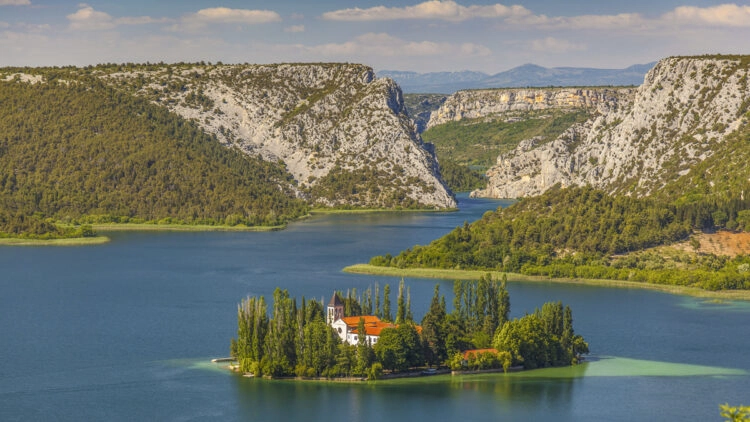
Climbing in the “Little Hell”, hiking in the Northern Velebit National Park
Paklenica means “little hell” in Croatian, which probably refers to the rough and steep karst rocks with many hidden caves. Because the Paklenica Gorge is said to bear resemblance to American canyons in the Wild West, it served as a backdrop for the 1962 Winnetou film The Treasure in Silver Lake. The national park, especially the gorge, is suitable for climbing due to the stable limestone rock.

Also in the (northern part) of the Velebit mountain massif near the town of Senj on the Croatian Adriatic is the Northern Velebit National Park. The park (Croatian: Nacionalni Park Sjeverni Velebit) in Lika-Senj County was placed under protection in 1999 and is about 109 square kilometers in size. The national park is known for its great viewpoints, high climbing rocks and numerous caves; it is considered a worthwhile destination for hikers (including long-distance hiking trail Premužićeva Staza) and mountaineers.

Veliki Risnjak: Great views of the Kvarner Bay
The eighth designated national park in Croatia is called Risnjak, was established in 1959 and covers almost 3,200 hectares. It is located in Primorje-Gorski Kotar County near Rijeka and Delnice. Risnjak National Park (Ris means lynx in Croatian) is located in the western part of the mountainous region of Gorski Kotar in northwestern Croatia. The highest peak, at 1,528 meters, is Veliki Risnjak, only 15 kilometers away as the crow flies. From the summit, on a clear day, there is a magnificent view of the Kvarner Bay, the Učka Nature Park, the offshore islands and north to Snežnik in Slovenia and the Karavanke mountains.
In the National Park Risnjak springs, among other things, also the Kupa, which forms the border with Slovenia for about 100 kilometers and after almost 300 kilometers flows into the Sava near Sisak. In this forested mountain massif live in the wild brown bears, wolves, lynxes, eagles and many other protected species.
